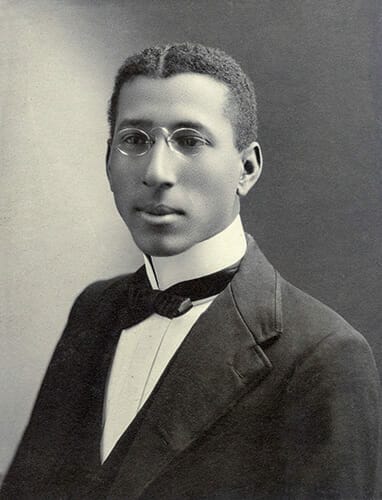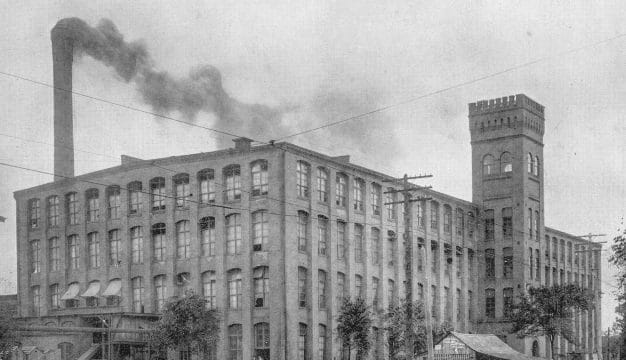George Williamson Crawford
 George Williamson Crawford
George Williamson Crawford (1877-1972) was a native of Tuscaloosa, Tuscaloosa County, who became the second African American to earn a law degree at Yale Law School. He went on to be an accomplished attorney and supporter of African American students at Talladega College, in Talladega, Talladega County. There, he was instrumental in commissioning the Amistad Murals and writing an extensive employment guide for African American graduates. Although he settled in New Haven, Connecticut, after law school, he continued to play an active role in Alabama at Talladega. He also was a founding member of the National Association for the Advancement of Colored People (NAACP) and established a branch in New Haven.
George Williamson Crawford
George Williamson Crawford (1877-1972) was a native of Tuscaloosa, Tuscaloosa County, who became the second African American to earn a law degree at Yale Law School. He went on to be an accomplished attorney and supporter of African American students at Talladega College, in Talladega, Talladega County. There, he was instrumental in commissioning the Amistad Murals and writing an extensive employment guide for African American graduates. Although he settled in New Haven, Connecticut, after law school, he continued to play an active role in Alabama at Talladega. He also was a founding member of the National Association for the Advancement of Colored People (NAACP) and established a branch in New Haven.
Crawford was born on October 21, 1877, to William and Charlotte Oliver Crawford. At the age of nine, his family moved to Birmingham, Jefferson County. He attended Tuskegee Institute in Tuskegee, Macon County, and graduated in 1896 and then entered Talladega College, earning a degree there in 1900. He was interested in attending law school, but Jim Crow segregation laws in Alabama prohibited African Americans from attending whites-only law schools in the state. Therefore, he applied to and was accepted at the Yale School of Law in New Haven, Connecticut. He excelled at his studies, graduated with honors in 1903, and won the illustrious Townsend Prize for oration, which included a $100 prize and the honor of speaking at graduation. He was a pioneer at Yale as only the second African American graduate. In 1905, he was elected to the Talladega College Board of Trustees, on which he served until his death. Even though he resided in Connecticut, he never abandoned his interest in Alabama.
After he completed his studies, he secured his first job as a clerk for the New Haven probate court. He would work there until 1907, when he started his own law practice. By this time, he was becoming involved in the African American civil rights “Niagara Movement” and chaired its civil rights department. The Movement would lead to the formation of the NAACP in 1911 and spark his long friendship and correspondence with founder W. E. B. DuBois. Crawford helped found the organization and served as a board member until 1933. In 1917, he established a branch in New Haven that would become the largest in New England and serve as its president.
As of 1911, he had met and fallen in love with Sadella M. Donaldson of Aberdeen, Mississippi. She had graduated from Columbia University and was an English teacher at Tuskegee Institute. They married in Manhattan, New York, on September 20, 1911, and would have one child.
Crawford was a determined supporter of African American Masonry and a member in Connecticut. He published Prince Hall and His Followers: Building a Monograph on the Legitimacy of Negro Masonry in 1914 to refute the notion that African American Masons needed the “recognition” of white Masons to be considered legitimate members of the fraternal order. In 1937, he authored The Talladega Manuel of Vocational Guidance, also known as The Red Book, at the behest of Talladega administrators. The guide, produced for use by African American colleges and counselors, provided definitions and requirements for vast fields of study and practical advice on how to interview for a job. It also outlined many possibilities for employment in numerous fields for African American men and women and included U.S. Census information, such as the number and types of businesses owned by African Americans and how many were employed in industrial and occupational categories.
In 1939, Crawford worked with the president of Talladega College, Buell Borden Gallagher, to commission six murals depicting the African American experience for the newly constructed Savery Library. Gallagher and Crawford tapped Hale Woodruff, the chair of the Art Department and a professor at Atlanta University (present-day Clark-Atlanta University), who had studied under famed artist Diego Rivera in Mexico. Woodruff’s six-panel murals depict the mutiny that occurred on the Amistad slave ship in 1849 as well as life at the college and would be his most notable work. He completed the murals by 1940, and today they attract visitors from around the world.
In 1968, Crawford was rewarded for his many years of service to Talladega College when Crawford Hall was named in his honor. Besides the residential hall, Crawford’s legacy at the college is remembered at the archives in the Savery Library, where his personal papers are held. The private collection includes his personal copy of The Red Book and another book dedicated to him by the college, To George W. Crawford in Tribute for Fifty years of Service to Talladega College, along with his law degree and personal correspondence.
Crawford died on August 3, 1972, in New Haven. In addition to the Prince Hall Masonic Lodge, he belonged to other fraternal organizations, including the Scottish Rite of Freemasonry, Sigma Pi Psi Fraternity, the Order of the Odd Fellows, and the Ancient Order of the Foresters. In addition to his membership on the board of trustees at Talladega College, he also served on the board of trustees for Howard University in Washington D.C. In 1979, the Greater Hartford Black Law Society changed its name to the George W. Crawford Black Bar Association, to honor Crawford.
Additional Resources
Crawford, George W. “Letter from George W. Crawford to W.E.B. Du Bois, March 24, 1937.” W. E. B. Du Bois Papers, Special Collections and University Archives, University of Massachusetts Library.
Crawford, George W. The Talladega Manuel of Vocational Guidance. Talladega, Ala: Talladega College, 1937.
Macaluso, Laura A. Art of the Amistad and Portrait of Clique. Lanham, Md.: Rowman and Littlefield, 2016.



